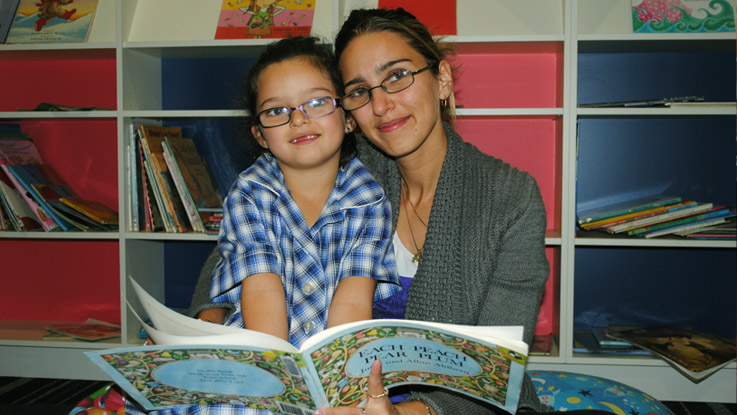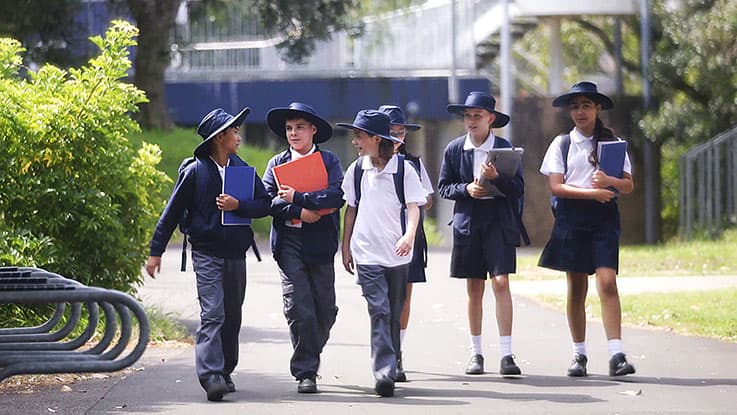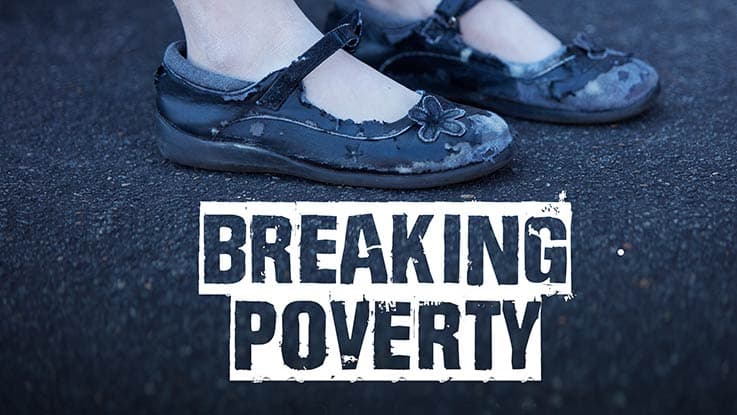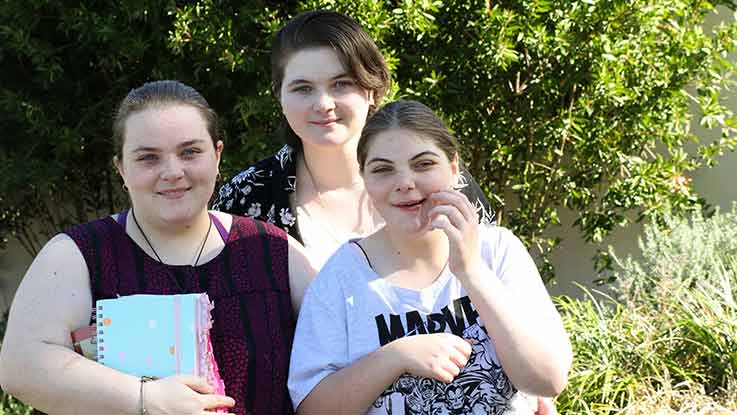
Poverty in Australia
Not all children get an equal start in life
Today, one in six Australian children and young people are living in poverty1, where even life's basics are hard to come by.
When families are experiencing financial disadvantage children can fall behind with their learning, leaving them more vulnerable to experiencing hardship themselves later in the life.
Research shows children and young people living in disadvantage have access to fewer books and learning materials in the home. Access to support and resources forms the foundation for learning. In many cases, the parents of disadvantaged children may not have the skills or experience to support their child’s education. As these children get older, they have fewer role models, and access to mentors and networks that are critical for creating educational opportunities to help them build their aspirations and be motivated to learn.

Compounding effects of disadvantage
The risk factors that can lead to educational disadvantage can begin in a child’s early years and continue throughout their school lives. This cycle shows that the contributors to disadvantage are complex, and without the right support a the right time the effects can be long term and intergenerational.

Students in our Learning for program face complex and cumulative challenges:
- All of them live in low-income families
- More than half live in a single-parent family
- Around one-third of students and a similar proportion of parents or carers have a disability or health issue
- About half have a parent or carer who didn’t finish Year 12 or equivalent
- Around three-quarters have a parent or carer who is not in paid employment
- 30% of school-aged Learning for Life students do not have a laptop of tablet and live in a household without mobile or broadband internet. The figure for secondary students is 20%


Financial pressure creates educational inequality

Financial pressure on a family can also profoundly impact a child’s education, locking them out of crucial learning opportunities and preventing them from fulfilling their potential.
Every child deserves the chance to achieve their best – but without equal access to essential learning resources and opportunities, children experiencing disadvantage often start school behind their peers and stay behind throughout their education.4
The inequality they face every day – through no fault of their own – means that by the time they are 15 years old, students living with disadvantage are on average 2–3 years behind in reading and maths.5
This educational inequality can prevent a child from fulfilling their potential and limit their prospects for the rest of their lives.6
However, breaking the cycle of disadvantage is possible through early intervention and balanced, ongoing support. The programs The Smith Family provides deliver measurable improvements in educational outcomes for students experiencing poverty, setting them on a path toward a better future.
We need a comprehensive national framework for reducing child poverty, with targets and publicly reported figures so we can measure it over time and determine which policies are most effective.
Now is the time to tackle child poverty as a national priority. Let’s not go back to business-as-usual as we recover from COVID, when we have an opportunity to make things better.

Education is one of the most powerful agents of change
Only around 60% of young people growing up in poverty complete Year 12, compared with 90% from higher socio-economic backgrounds.7
Together, we can address the educational inequality that children face as a direct result of financial disadvantage.
Our evidence-based programs are proven to help children stay engaged in their learning, giving them a greater chance of completing their education to Year 12 (or equivalent).
This, in turn, gives a child greater options for further study and employment – and the chance every young person deserves to pursue their goals and fulfil their potential.

How we help break the cycle of disadvantage

Our Learning for Life programs support children and young people to participate more fully in their education by providing innovative, evidence-based programs and emotional, practical and financial support throughout their schooling and tertiary education.
Our programs give disadvantaged students the skills, motivation and essentials to stay in school and get the most from their education so they can create a better future for themselves.

Breaking poverty: a Smith Family podcast
A hand up, not a hand out

Find out more
1 Davidson, P, and Bradbury, B, 2025 Poverty in Australia 2025: Overview, Sydney: Australian Council of Social Service (ACOSS) and UNSW Sydney.
2 Thomson et al, 2011,Challenges for Australian Education: Results PISA
3 2011 Employment and Workplace Relations. Review of school funding final report. Department of Education.
4 2012 National Report on Schooling in Australia 2010: Additional statistics Australian Curriculum, Assessment and Reporting Authority.
5 2008 Australian Curriculum, Assessment and Reporting Authority Department of Education, Employment and Workplace Relations.
6 Access Economics, 2005The economic benefit of increased participation in education and training Dusseldorp Skills Forum and Business Council of Australia, Sydney.
7Lamb, S, Huo. S, Walstab, A, Maire, Q, Doecke, E, Jackson, J and Endekov, Z, 2020 Educational opportunity in Australia 2020: Who succeeds and who misses out Melbourne: Centre for International Research on Education Systems, Victoria University for the Mitchell Institute.
* Names, family details and associated images have been changed to protect the family’s identity.



